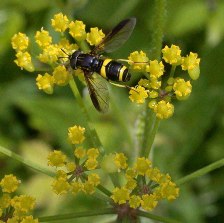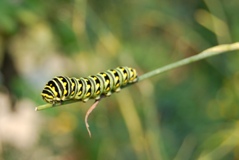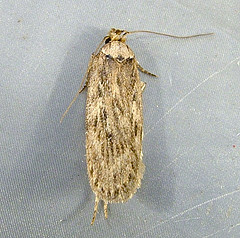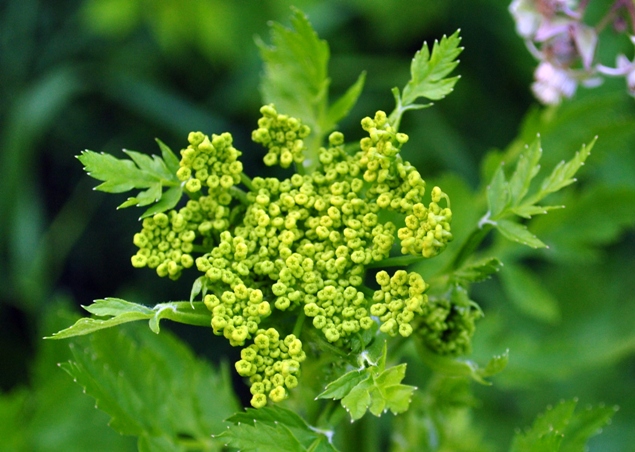I’m never alone
I am constantly interacting with other organisms. There are a lot of different insects that act as my pollinators, I act as a food source for some organisms, and I even interact with fungi!

Pollinators play an integral role in my sexual reproduction. To find out more about how pollination works, check out the Reproduction page. My nectar attracts many different pollinators that include: bees, wasps, sawflies, flies, butterflies, skippers, moths, beetles and plant bugs. It is beneficial that I have such a wide range of pollinators because a lack of pollinators will not adversely affect my habitat range. It is very likely that one or more of these pollinators will be present anywhere I grow.

Even though I produce a phytotoxin (furanocoumarin), some organisms still use me as a food source. The Eastern Black Swallowtail caterpillars use me as a host plant. The butterfly lays its eggs on my foliage, and when the larva emerges, it feeds on my foliage until it enters its pupal stage. This caterpillar is able to detoxify my furanocoumarin chemical so that the chemical is not detrimental to the caterpillar’s health. I am on the wrong end of this parasitic relationship, and these caterpillars have the ability to kill me when I am used as a host plant.
I have a very close relat ionship
with the parsnip webworm. It is the main organism that consumes
me. The parsnip webworm is in close association with me throughout
its entire life cycle. Its eggs are laid on my foliage and its
larval stage feeds on my floral parts. The webworm uses my stem as
its pupation site. It has the ability to metabolize the toxic
furanocoumarin that I produce, so it is unaffected by the toxin.
Since I am in such close association with this insect, it has been
found that my furanocoumarin levels directly correlate with the
presence of the webworm. If there are many webworms in my habitat,
my plants have a higher level of furanocoumarin in attempt to
protect myself. However, I am usually at a stalemate with this
organism. I cannot produce enough furanocoumarin to eradicate the
webworm and the webworm is not prevalent enough to wipe out large
populations of my plants. I also have a few other parasites that
take advantage of my leaves and hollow stem.
ionship
with the parsnip webworm. It is the main organism that consumes
me. The parsnip webworm is in close association with me throughout
its entire life cycle. Its eggs are laid on my foliage and its
larval stage feeds on my floral parts. The webworm uses my stem as
its pupation site. It has the ability to metabolize the toxic
furanocoumarin that I produce, so it is unaffected by the toxin.
Since I am in such close association with this insect, it has been
found that my furanocoumarin levels directly correlate with the
presence of the webworm. If there are many webworms in my habitat,
my plants have a higher level of furanocoumarin in attempt to
protect myself. However, I am usually at a stalemate with this
organism. I cannot produce enough furanocoumarin to eradicate the
webworm and the webworm is not prevalent enough to wipe out large
populations of my plants. I also have a few other parasites that
take advantage of my leaves and hollow stem.
Like 90% of plants, I have a mutualistic relationship with endomycorrhizae. This is a fungus in the phylum Glomeromycota. The fungi grow in my root cells and provide me with nutrients like nitrogen, phosphorous, and potassium. In exchange for these nutrients, I provide the fungi with sucrose that it uses for energy.
Learn some cool facts about me!
Return Home
